How to Correctly Clean Makeup Brushes
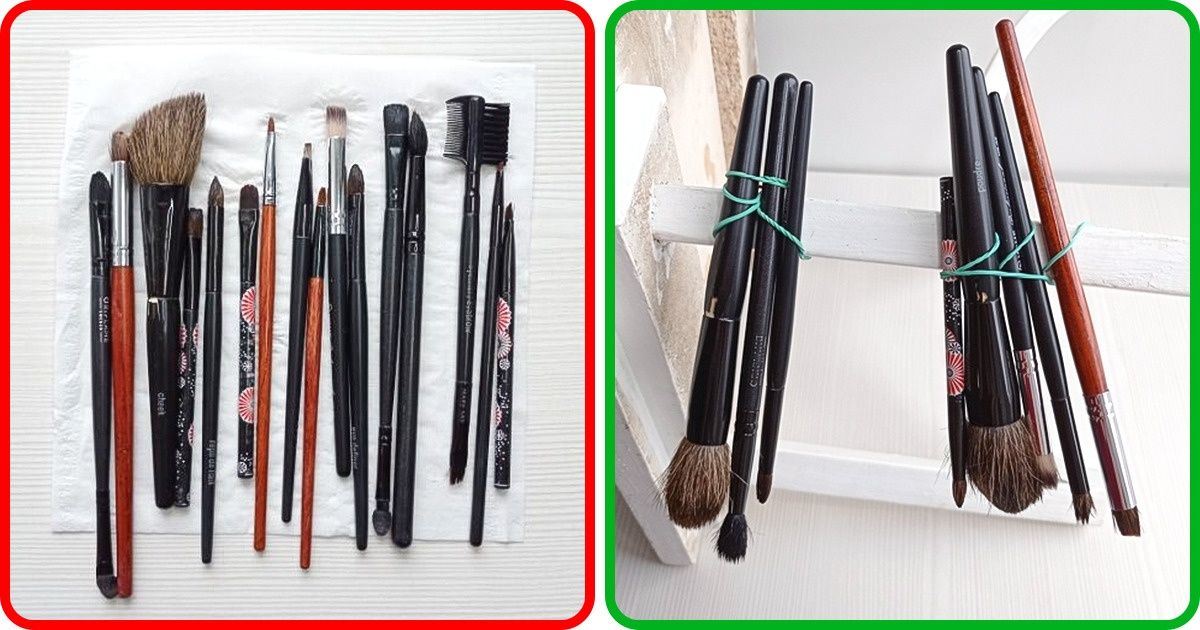
When using decorative cosmetics, many of us forget that brushes and sponges require regular care. Not only do dirty tools apply cosmetic products poorly, but they can also become the reason for skin rashes.
5-Minute Crafts is telling you how to correctly take care of makeup brushes.
How often we should clean makeup brushes
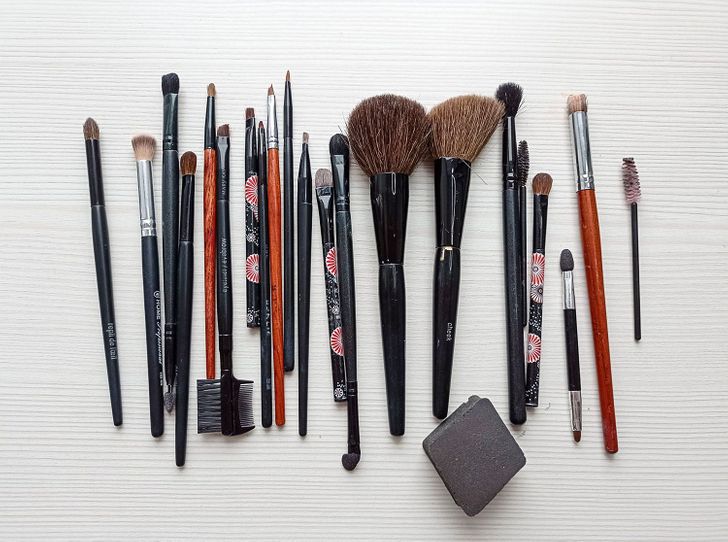
To prevent bacteria from growing on the surface of your brushes and to protect your skin, dermatologists recommend that you wash your makeup tools thoroughly every 7-10 days. Pay special attention to brushes that apply makeup base, concealer, and foundation. When used frequently, their bristles get dirty faster than the hairs of other brushes.
It’s better to wash and dry sponges every day or after each time you use them. Due to their porous structure, they retain moisture well, which contributes to the accelerated growth of bacteria. In order not to damage the skin on your face, it’s better to address the cleanliness of the cosmetic sponge in advance.
How to correctly wash and dry brushes
Dermatologists recommend sticking to the following principles of cleaning brushes.
- Rinse your brushes with warm, running water.
- Pour some water into a deep bowl and add a cleaning agent to it.
- Rotate the tip of every brush in the bowl and slightly rub it with the fingers to soften the contaminations. To remove particularly stubborn dirt, you can rub the brushes against a fine strainer, or use a special brush.
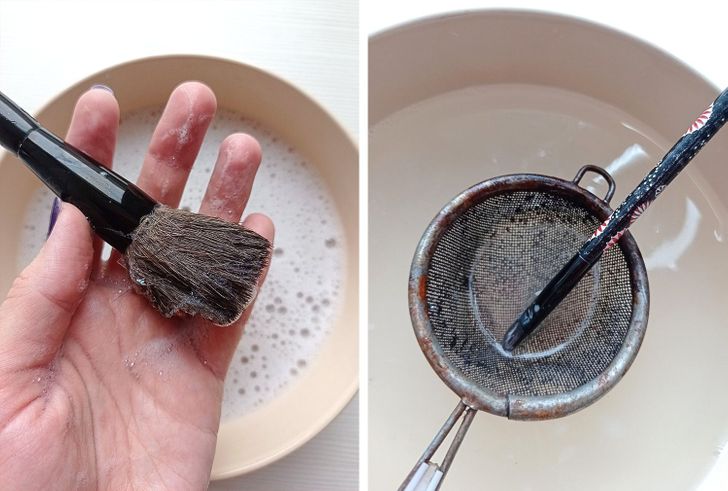
- Rinse brushes under running water and gently squeeze out excess moisture.
An important note: Make sure your brushes always face down while cleaning. This will prevent water from getting under the metal tip and dissolving the glue that holds the brush hairs in place.
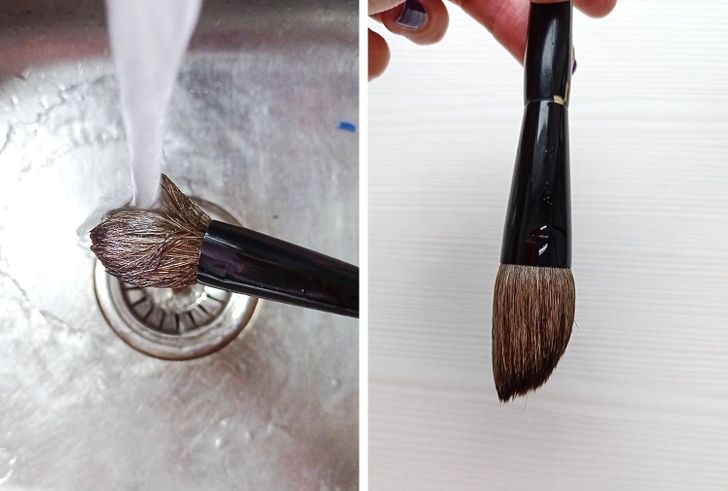
- Continue soaping and rinsing the brushes until the water becomes clear.
- Gently squeeze each brush and remove the excess water with a paper towel.
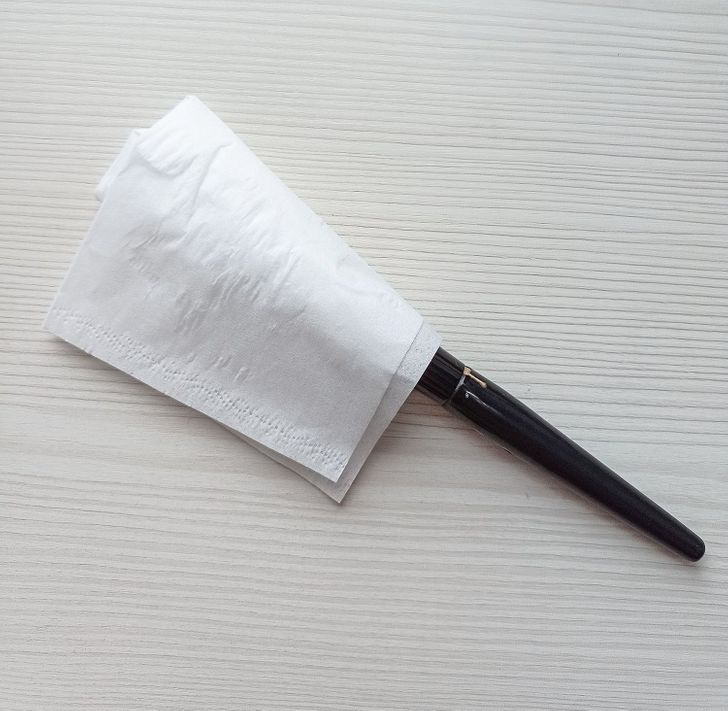
- Put the brushes on the paper towel and dry them in a horizontal position. Experts recommend putting brushes on the edge of a table so that the heads of the brushes dry in a natural position.
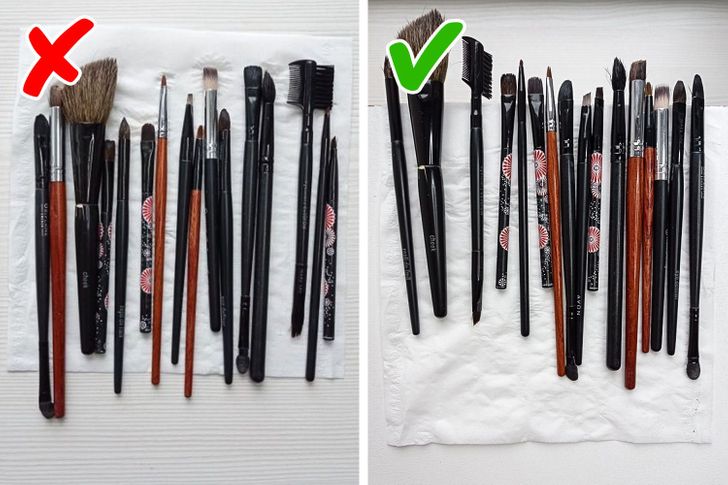
You can also use your savvy to perfect this method with the help of simple items. For example, you can secure brushes on a chair leg with the help of stationery rubber bands. It will prevent them from falling down, and they’ll dry in the right position.
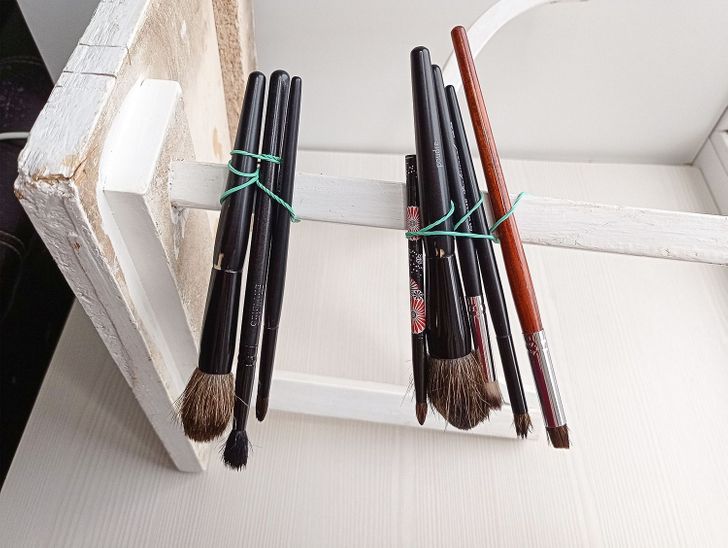
What agents can be used for cleaning brushes
1. A special agent for cleaning brushes
The variety of special agents for cleaning brushes is vast. You can find both liquid and solid products as well as special brushes for removing dirt on the market. You can choose any agent you’d like and clean your tools without much effort.
2. Water + shampoo
Fill a small bowl with lukewarm water and dissolve 1 tbsp of mild shampoo (like the kind for babies) in it. Clean the brushes following the same method as described above.
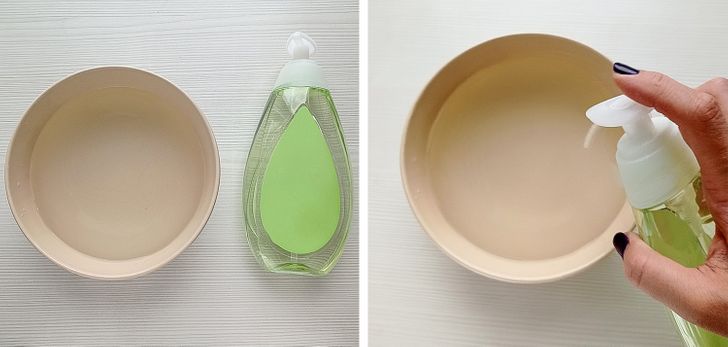
3. Antibacterial soap + olive oil
Mix the soap and the water in equal portions and apply the mass to a brush. Gently wipe the tip of the brush with your hands and rinse with water. Repeat the process if necessary.
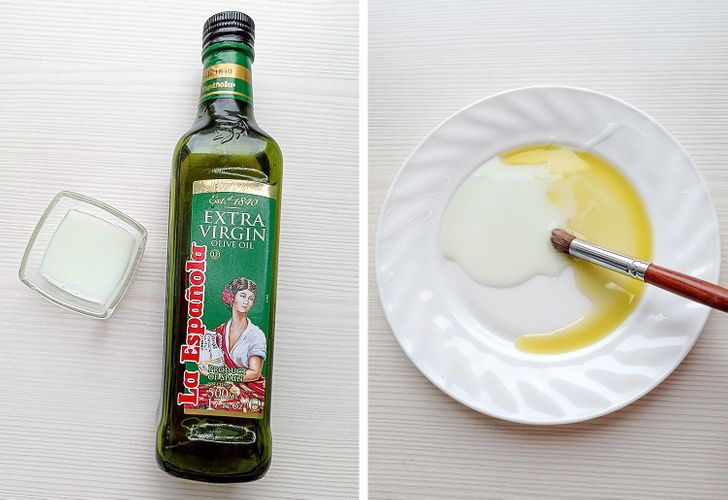
4. Hydrogen peroxide + baby shampoo
Dissolve several drops of baby shampoo and 1 tsp of a 3% hydrogen peroxide solution in a glass of lukewarm water. Clean the brushes to remove dirt and then rinse them under warm water.
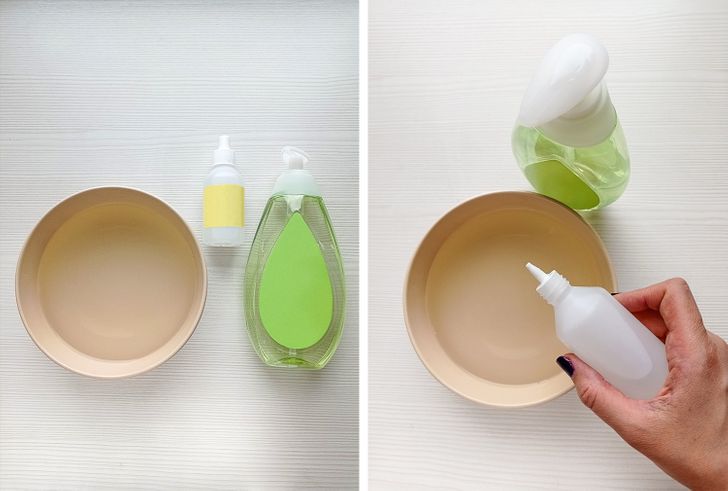
5. Water + apple cider vinegar + dishwashing liquid
Mix 1 glass of warm water, 1 tbsp of apple cider vinegar, and 1/2 tsp of dishwashing liquid in a bowl. Rinse the brushes in this mixture and leave them on a horizontal surface to ensure the dirt gets dissolved. Use the same mixture after several minutes, wipe the bristles of the tools with the tips of your fingers, and wash the brushes with water.
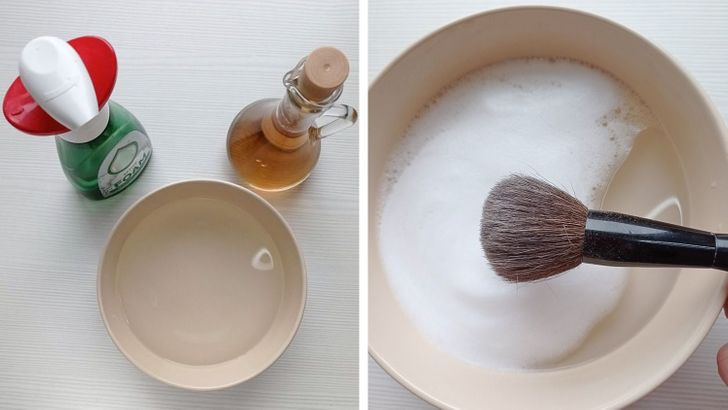
An important note: Natural bristle brushes should be handled more carefully. The methods using hydrogen peroxide and vinegar are more suitable for brushes with artificial bristles.